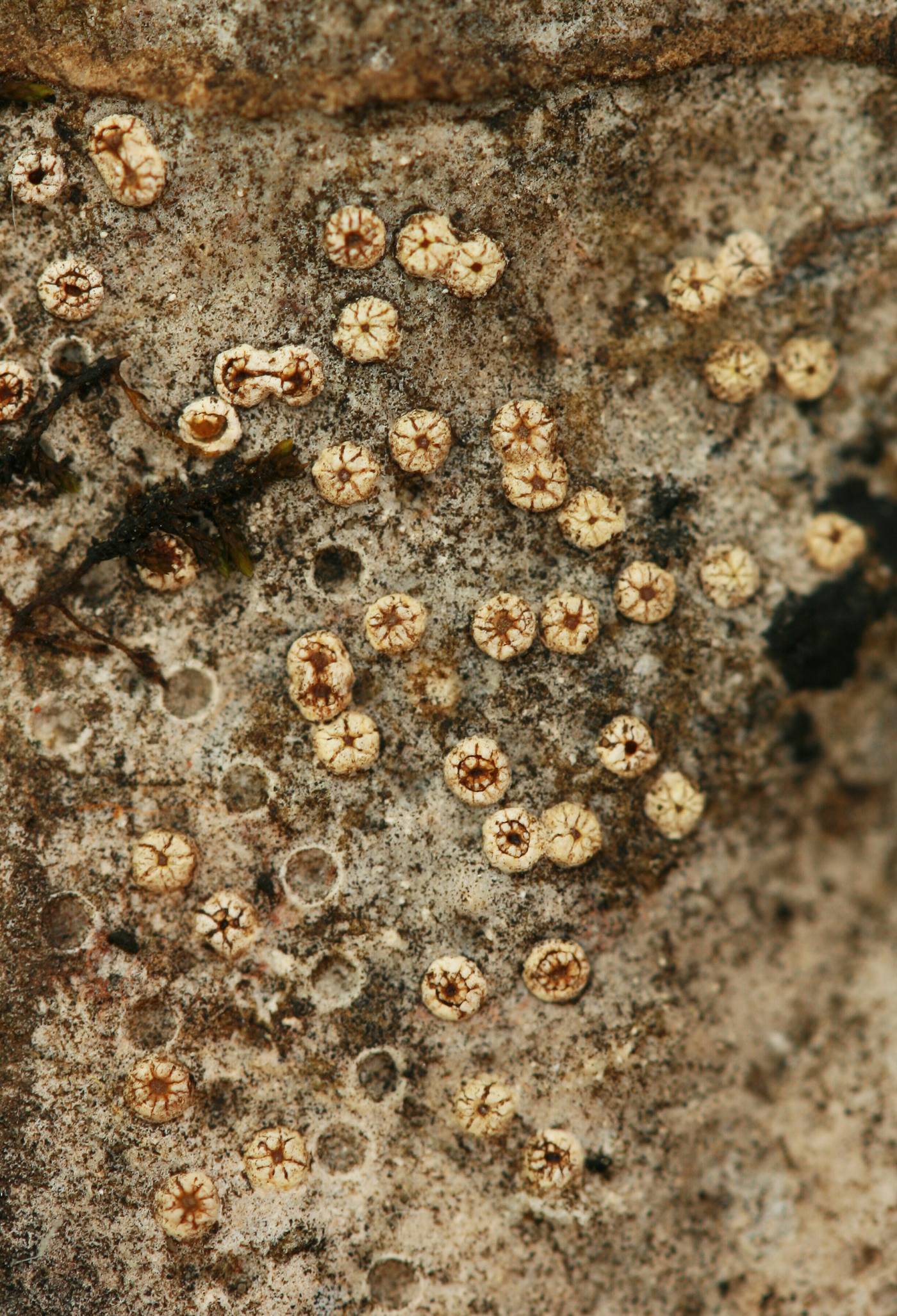An unmistakably recognizable species associated with pure limestone or more rarely soft calcareous rocks. It forms decorative pale apothecia which crack in the form of a star and are at least partly immersed in the substrate. Its thallus is endolithic and contains a cyanobacterial Scytonema-type photobiont, which is not known from other lichens.
In the Czech Republic, it had long been known only from the Petřín hill („Ad lapides calcareis in monte Scti Laurentii“; Mann 1825), probably from the local calcareous sandstone. However, it is probably extinct there. The record was also cited by later authors (see the catalogue by Vězda & Liška 1999). During the first half of the 20th century, it was also recorded by J. Suza at the Kotouč hill near Štramberk and in the Pálava Hills. During the second half or the 20th century, it was also found near Lipová in the Jeseníky Mts by A. Vězda (Vězda 1965). The species was found in the Bohemian and the Moravian Karsts only recently. Petractis clausa is widely distributed from lowlands to high elevations. It is probably a poor competitor, a pioneer species associated with porous limestones and easily weathering calcareous rocks. It prefers sheltered stands, with small temperature amplitudes and stable humidity. It may grow on vertical to overhanging rocks or small stones on the ground (Wirth et al. 2013).
Literature: Mann W. (1825): Lichenum in Bohemia observatorum dispositio succinctaque descriptio. – Pragae: Typis Sommerianis. Vězda A. (1965): Flechtensystematische Studien I. Die Gattung Petractis Fr. – Preslia 37: 127−143. Wirth V., Hauck M. & Schultz M. (2013): Die Flechten Deutschlands. Band 1, 2. – Ulmer, Stuttgart.
taxonomic classification:Ascomycota → Lecanoromycetes → incertae sedis Lecanoromycetes → Petractis
Red List (Liška & Palice 2010):VU – vulnerable
Red List (Malíček 2023):C1 – critically endangered
Occurrence in the Czech Republic
All records: 5, confirmed 4. One click on a selected square displays particular record(s), including their source(s).
